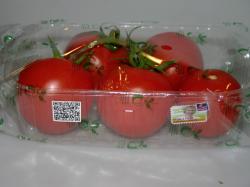PLA Packaging May Increase Shelf Life Of Peppers & Tomatoes On The Vine
April 8, 2011 | 1 min to read

Peppers and tomatoes on the vine seems to have a longer shelf life in PLA packaging compared to the products that are packed in traditional synthetic materials. This was proven by research conducted by the University of Wageningen (Food &Biobased Research Dept) commissioned by Eosta (marketer of organic fruit and vegetables), Taghleef Industries (manufacturer of packaging foils) and Bio4Pack (marketer of bioplastics). Previous research by the same university earlier this year indicated that packaging material such as sugar cane fibres, PLA dishes and PLA films are better for the environment.
‘By using PLA we provide retailers with a tool to help them decrease losses on the shop floor and at the same time we help them to contribute in a positive way to the environment,’ says Paul Hendriks, who is responsible for packaging for Nature & More within Eosta. ‘We have been using biodegradable packaging from renewable raw material for years and are delighted to see that scientific research supports what we have always experienced. We are seeing that products packed in PLA have an extended shelf life of two days.’ Eosta was the first to introduce biodegradable packaging to European consumers (in 2005). Today the company is the main buyer of biodegradable packaging from renewable raw material in the produce industry.
The PLA packaging from the research applicants (Eosta, Taghleef Industries and Bio4Pack) were bought within the framework of the source options programme, which means that these companies are not promoting the use of GM sources for their raw materials.
Source: Eosta B.V.
